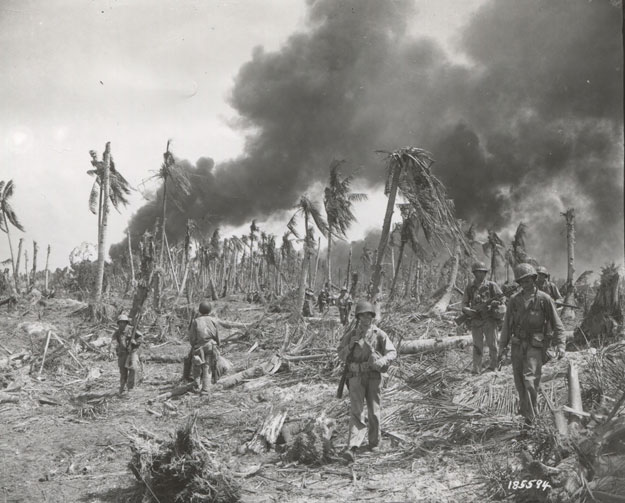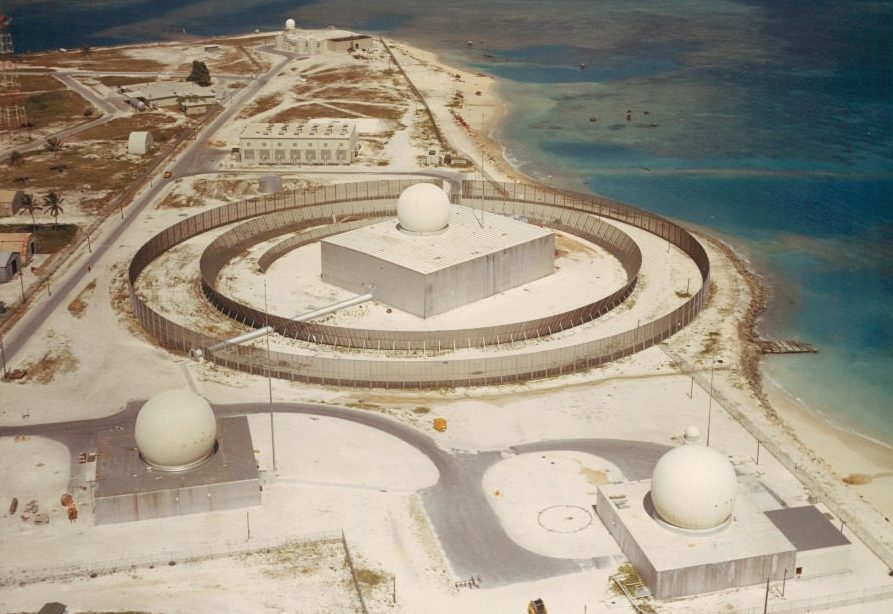Past
By February 8, 1944 the United States had secured Kwajalein Atoll in the Marshall Islands. After heavy bombardment that destroyed all vegetation on the island and crippled the defenses of the occupying Japanese forces, it took only a matter of days and relatively few casualties for the United States to claim Kwajalein as its own. Yet World War II was only the beginning of American military presence on Kwajalein. Rather than leave after the fighting ended, the United States governed the Marshall Islands under a United Nations trusteeship. From 1946 to 1958 the United States Navy used Kwajalein as a support base for the infamous atmospheric nuclear tests in Bikini Atoll among other parts of the Pacific. Capable of destroying the world many times over, in the late 1950s the United States turned towards developing the intercontinental ballistic missiles that would deliver these weapons of mass destruction. In 1959 they turned Kwajalein over to the US Army and designated the atoll as the site for Cold War missiles testing. The “catcher’s mitt” of the Pacific, missiles fired from Vandenberg Air Force Base in California were soon landing in Kwajalein’s lagoon.[1]
The advent of the missile program led to the dramatic transformation of Kwajalein into American suburbia. Scientists and military contractors were met with the comfort and security of American domestic life. Yet to replicate segregated 1950s America in the Pacific, the United States displaced the indigenous Marshallese onto the nearby Ebeye Island. They thus cast the indigenous inhabitants as foreign labor, forcing them to commute to and from Kwajalein to work in domestic service for their American employers. The first section of my essay explores the double entendre of nuclear in this Cold War creation of American domestic paradise. American fears of nuclear warfare assuaged by the security of the nuclear family shaped the structures of colonialism on Kwajalein.
[1] “Focus On: D-Day Kwajalein,” The National World War II Museum, New Orleans.

